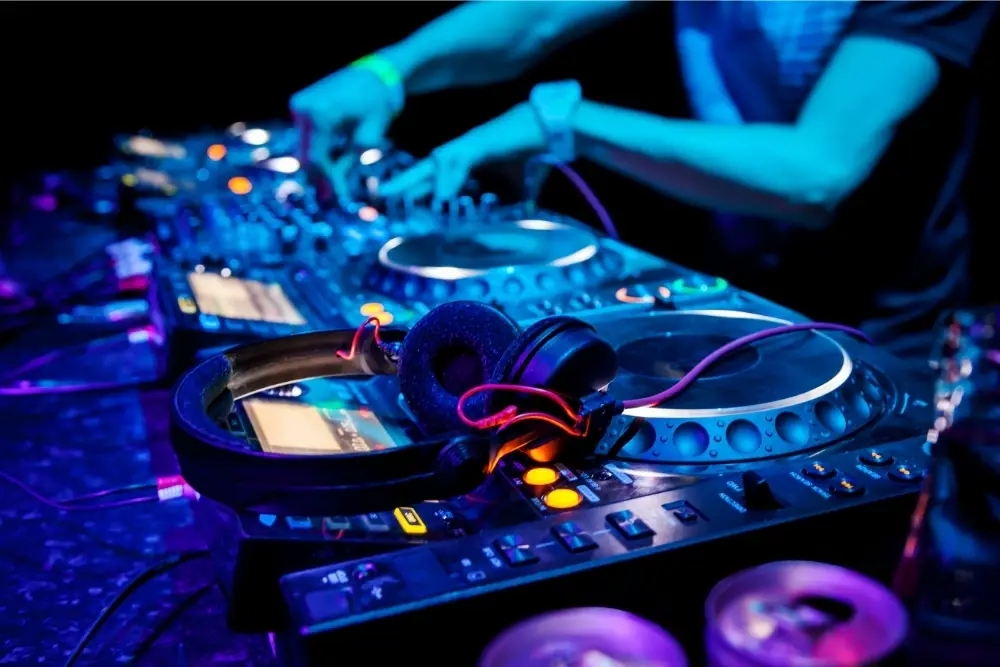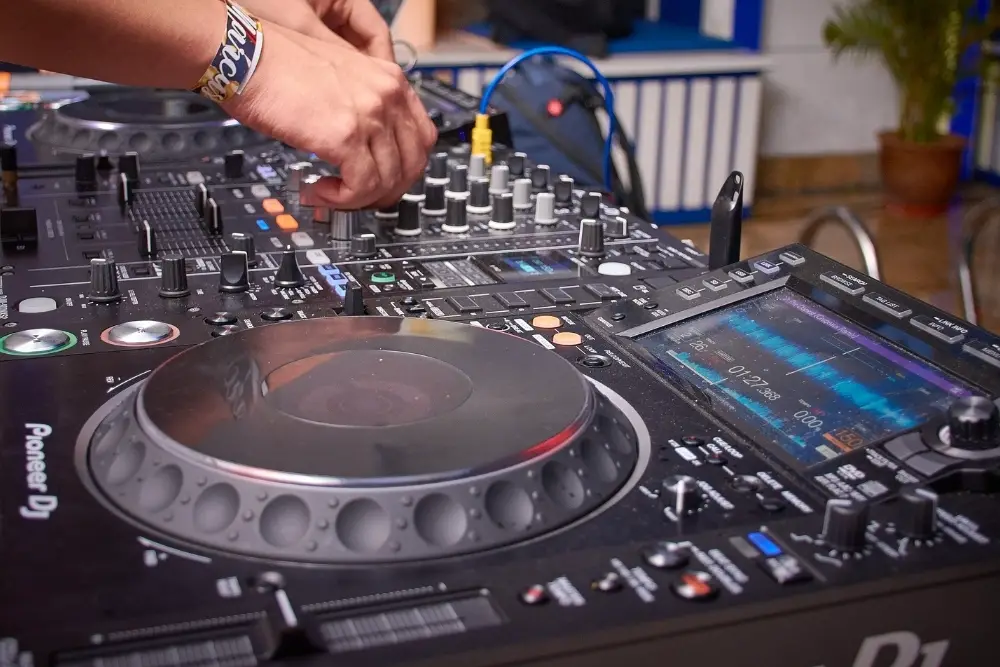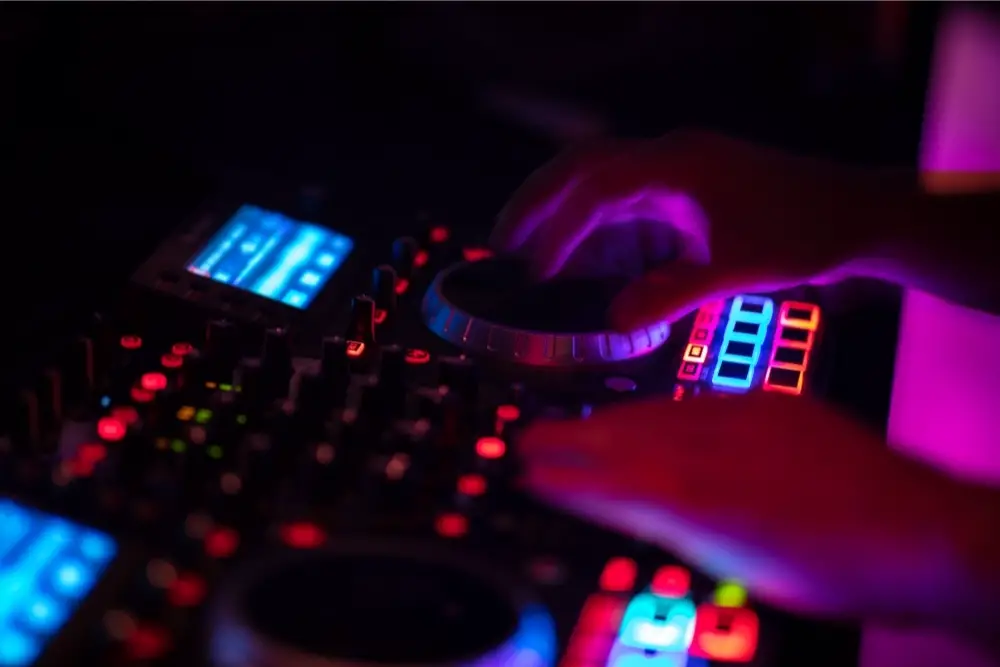How to Create a DJ Set List
DJing may seem easy to do on the surface but it actually takes a lot of skill and technique. What makes a great DJ great is their ability to take their audience on a journey by creating a set list that they are going to remember.
But how do you come up with a memorable playlist that is going to show off your skills? We’ve gathered everything you need to know when it comes to curating the perfect playlist.
Knowing your DJing environment

The first thing you need to think about is what environment you’ll be playing in. This will make a huge difference when it comes to selecting your playlist. Is it someone’s birthday, a nightclub or a bar or somewhere entirely different.
Whatever the occasion, you have to bear this in mind when it comes to the selection and mixing of your tracks. These factors will influence your subsequent choices:
Venue
The venue is more important than it may seem as not all venues can cater to certain styles of music. For example, if you are playing in a public place then it is wise to ensure that the volume isn’t too high or intense whereas nightclubs would demand heavy basslines and intensity.
Making sure that you bear the type of venue and its size accordingly will mean that you are selecting a playlist that is appropriate for the setting which will make it more enjoyable for you and your audience as well as giving you the experience of playing in different settings.
Time
Following on from the venue, the time of the performance will also play a huge part in your playlist. Your audience is going to be massively different at 10pm than at 3am so knowing what kind of music and tracks that your audience will want depending on the time is going to affect your choices.
For example, an audience at 3am is going to want wildly intense music as nightclubs tend to build up the intensity through the course of the night. Part of being a successful DJ is knowing what your audience wants at any given time.
Set length
How long you are performing for will affect your playlist as you need to make sure you incorporate everything you want into an allotted time. The majority of DJing gigs you come across will have a specific performance time so making sure you perfectly time it without running too short or going over will mean that you are likely to be asked back for regular gigs potentially.
Being able to manage the time of your performance takes a lot of skill as you have to manipulate the music in a way that it doesn’t feel as though you are abruptly finishing the set. DJ sets can range from 10 minutes to over 2 hours so knowing how to take your audience on a journey regardless of your set length will make you a great DJ in the long run.
Filtering your library
Now you know what to expect when it comes to your DJing environment, you’ll have to filter your library accordingly so you have what you need to hand rather than searching for long periods of time. The more organized your library is, the better your DJing will be as you’ll be able to see what songs can be mixed just from looking at it.
Organizing your library by BPM, key, musical genre and rating is going to help you a lot in the long run. The best DJs may seem like they play spontaneously but they actually benefit from having extremely sophisticated systems which helps them to flawlessly put their playlists together.
Analyzing your tracks

Now that you have filtered your library, you should analyze your tracks. This means knowing your tracks from beginning to end and learning all the nuances and details. The more you play the track and the more you practice, the better your DJing will be.
Grouping your tracks into sets of 3 will help you build a foundation for your playlist and learn how to mix songs that can compliment each other well. After a while, you’ll be incorporating your techniques based on a hunch rather than actively thinking about it.
A lot of DJ softwares have a comments column in the library where you can add your own notes as you practice. This is great when it comes to your first set of performances so you won’t have to worry about memorizing everything.
The skills and techniques from DJing will come naturally as you garner more experience. Once you’ve got your initial set of tracks ready, here are the next steps that you should take:
Ordering your tracks
As simple as this sounds, ordering your tracks can actually take a long time so make sure you don’t rush as this will ensure that your setlist is as tight as it can be. Don’t feel as though the order is set in stone as you may find yourself changing the order with more practice.
Making your playlist
Not all tracks are the same and that means that some don’t work as an opener or closer. Knowing how to work with the tempo of the tracks and the tone and style is going to ensure that your playlist gets off to the best start possible.
Starting to make your playlist may seem like a daunting task but once you get started, you’ll find that everything starts fitting into place. The reason why groups of 3 are great is because you can learn how to identify a starter, the middle and the end of a playlist and learn how to extend this.
If you find yourself a bit stuck for inspiration, you can start a track from any point and incorporate any effects to make it different while still feeling familiar to your audience. You can even start acapella and encourage your audience to join in.
Following the opening track
Once you have figured out how to open your playlist, you’ll need to follow it up with a variety of groups of songs that work well when put together. Working on each group separately and then seeing how they blend together is going to help you develop your musicality as well as allow you to experiment with your own sound.
You may find that changing the order also works best in the long run. Whatever you decide, it’s all about developing your own skills and techniques and practicing until it sounds perfect.
Adding surprises to your playlist
You’ve got your groups and the playlist all set up but that doesn’t mean that you are ready to perform it. A huge part of being a successful DJ is injecting your own personality into it.
This is where your skills and techniques come in handy. Incorporating samples, cues and the other listed techniques above is going to surprise your audience and take them on a journey that requires them to actively listen to the music which makes it more memorable.
Picking tracks from different genres that have similar tempos is a great way to keep your audience captivated as they won’t know what to expect next.
You can also use acapella to see what kind of reaction the audience will give you back as it will encourage them to sing along. It may not seem like it but crowds love the unexpected so be sure to fill your playlist with plenty of surprises to keep them entertained.
Hot cues, looping cues and markers
Traditional DJing allowed regular tracks to be enough to entertain a crowd but nowadays, DJing takes a lot more skill and technique in order to make the performance more exciting and elevate it to the next level.
Hot cues
Hot cues allow the DJ to set numerous cue points so you can play a track from a particular point in the song rather than the traditional start to finish.
Not only is this highly convenient, but it makes mixing songs and manipulating music a lot easier. Allowing you to remix any track live, every DJ should have at least four hot cues set up before their performance which will make the performance more exciting and original.
The best way to mix your hot cues is by mixing songs with the same beat structure to make the shift more natural. Hot cues allow you to highlight any melodies and nuances that you want to incorporate into your set.
Loop cues
Loop cues are similar to hot cues but where they are different is that they preset the loops with a specific start and end point. This is ideal for those who want to be more creative with their mixing.
Loop cues mean that you will have a never ending track so you can incorporate a percussion or vocal loop that plays throughout some of the songs which gives it a consistency. Allowing you to extend your mix, you can work on some improvisation during your mix without worrying about any moments of silence or awkwardness.
Markers
Markers aren’t as useful as hot cues or loop cues but they allow you to see where certain parts of a track are coming up such as a verse or new melody. This is great for beginner DJs who are learning how to mix.
There are certain DJ softwares that allow you to add your own markers to the track so you can work on incorporating your loop and hot cues accordingly. The more you advance in your skillset, the less markers you will need as you will be able to hear the changes coming up.
Practicing your mixes

So you’ve gathered your playlist and added in your cues and markers but that doesn’t mean you are ready to perform. As the old saying goes, practice makes perfect and DJing is no exception. By practicing, you’ll be able to go through the playlist thoroughly and make changes accordingly.
You may find that tweaking the song order makes a huge difference and elevates the entire sound or adjusting a hot cue to a better place. DJing may seem easy on the surface but it requires a lot of skill and technique which in turn leads to a lot of practice.
Not only are you going to become a better DJ but you’ll find that your confidence as a DJ will grow and when you go through your playlist, you’ll have a flawless performance.
Experimenting
Experimenting with your sound is what is going to separate you from the competition. The difference between a good DJ and a great DJ is that the latter is able to experiment with the music in a way that makes it memorable and different from how it normally sounds without taking away the beat and tone of the original song.
Being able to successfully incorporate loop cues and samples is going to improve your confidence and overall technique. Here are the types of samples that you should consider experimenting with:
Percussion loops
Percussion loops mean that you have a constant sound playing throughout and can easily be synced up with the BPM of your master track to provide a consistency and natural integration. Percussion loops can easily be downloaded from DJ software or you can work on your own sound for more originality.
Loops and samples
When using loops and samples, keeping the volume lower than the master track is going to ensure that it adds depth to the performance rather than overwhelming the song.
Whether you want to download a loop or sample from certain software or create your own, it’s a great way to add ambience to your tracks. Making sure that the key matches will prevent any awful clashes in sound.
One shot sound effect
Lastly, one shot sound effects can add intensity to a track by including soundscapes and effects. The most common one shot sound effects used are percussion with drums and cymbal crashes as well as signature DJ sounds such as laser beams and alarms.
Although these are the more traditional inclusions, you can get more creative and fearless with your sound effects. There are a variety available on various DJ software or you can make your own.
Taking your audience on a journey
Taking your audience on a journey is the most important part of any DJ set. There’s no use just mixing the newest releases and putting it all together. This may be fine if you are performing in a club where that is expected but a memorable DJ set will take their audience on a journey by mixing the old with the new and adding in some unexpected surprises.
Knowing how to create a memorable DJ set isn’t easy but the more you practice and perform, the better your sets will become as you will be able to feed from the audience and make the performance your own. After all, you control the music and want to give your audience a good time.
Maybe you want to highlight a particular artist or genre, always think about how your songs feed into the other and listen to how the playlist evolves as the performance progresses. You want to ensure that there is a natural transition from one song to the next, even if they are completely different in style and tone.
A great way to think about it is by splitting your playlist into different chapters so you can have a selection of similar songs which then transition to a new chapter where the audience is taken in a different direction. Using a mix of loop cues, hot cues, samples and soundscapes is going to help enhance the playlist and create an immersive experience that your audience will remember.
Conclusion
Now you have everything you need to create your own DJ set list. Having concrete knowledge of each song from beginning to end will ensure that you have everything you need to make sure where you can incorporate your loop cues, hot cues, markers and comments so you can work on making the whole set an immersive experience for your audience.
The best way to build up your playlist is by grouping your songs into sets of 3s so you are able to tell a story through the music. Incorporating new releases with older songs and surprises will help you to distinguish yourself from the crowd and will allow your performance to become more memorable to the audience.